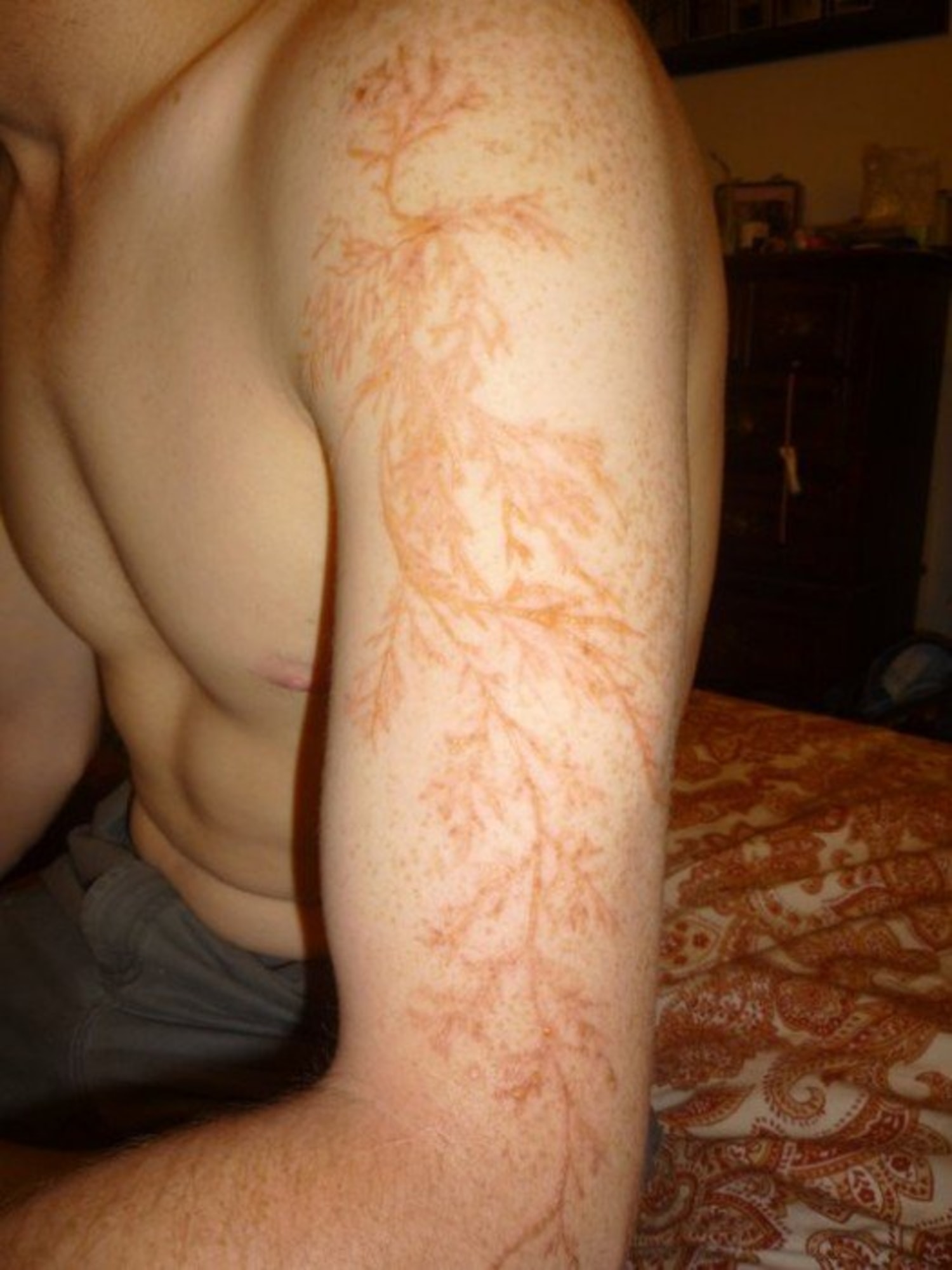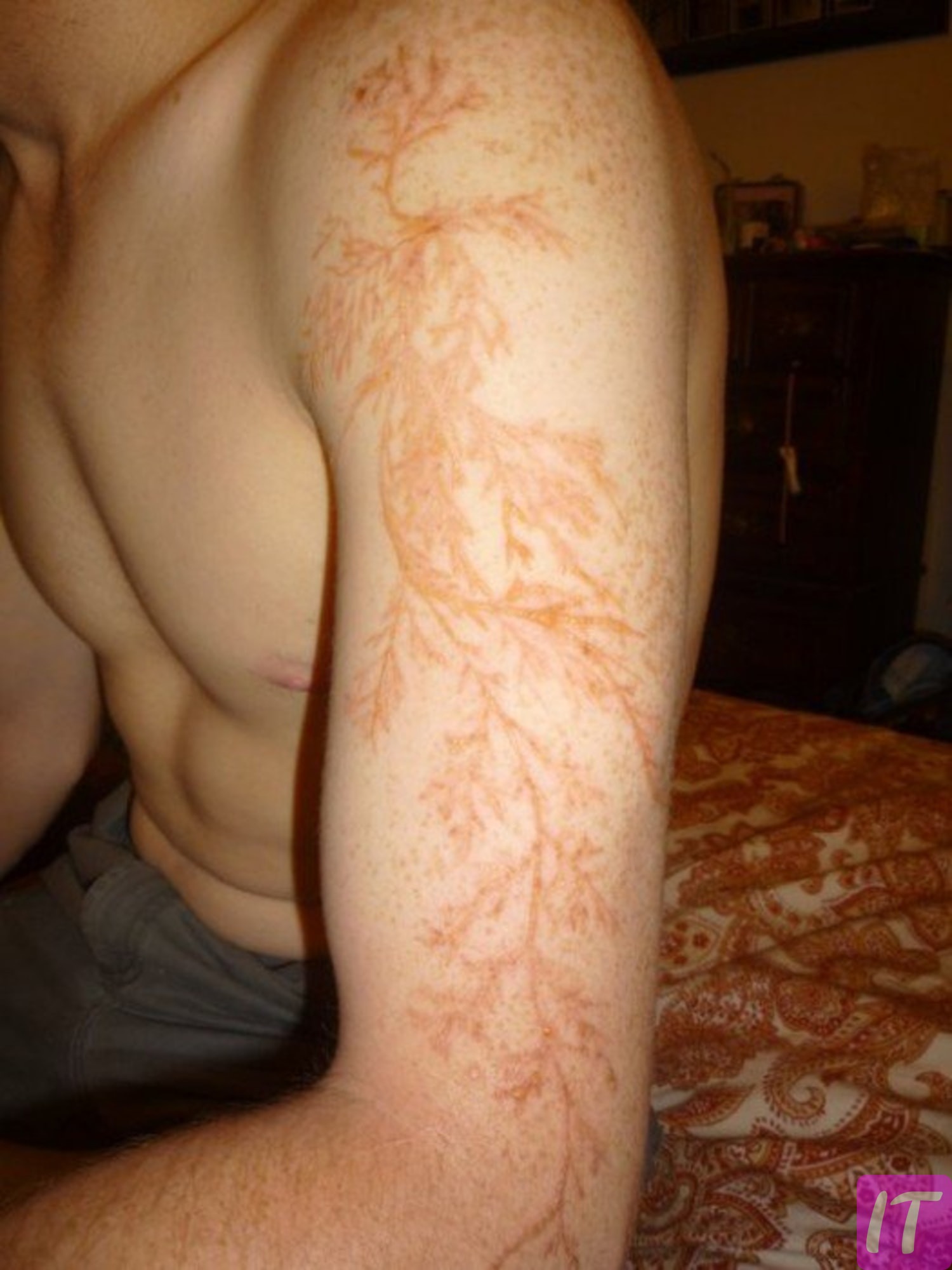Lightning can strike with a force that can exceed 30,000 amperes and temperatures hotter than the surface of the sun. When this formidable natural phenomenon targets a human, the repercussions are immediate and profound. Most strikingly, the electrical current can disrupt the body’s electrical systems, leading to cardiac arrest or severe burns.
The effects of a lightning strike on a person can vary widely, largely depending on the intensity and the precise path of the current through the body. Historical data reveals that approximately 10% of people struck by lightning are killed, while the other 90% might suffer debilitating injuries or long-term health issues. This blend of immediate impact and potential lasting damage underscores the risks associated with one of nature’s most electrifying displays.

The Power of Lightning: Unleashed on Humans
Lightning is a force of nature that can be both beautiful and deadly. With its immense energy, it can travel at speeds of 270,000 mph. When it strikes a person, the consequences can be severe. A direct hit can send up to one billion volts through the body. This massive electrical discharge can cause significant damage.
The human body is not designed to withstand such extreme electrical power. When lightning strikes, it can lead to severe burns and nerve damage. The heat from a lightning strike can reach 50,000 degrees Fahrenheit, five times hotter than the surface of the sun. This can cause third-degree burns and steamy airways. Sometimes, the intense heat can even ignite clothing.
A lightning strike can also disrupt the body’s electrical system. This can result in cardiac arrest, where the heart suddenly stops beating. Other possible effects include strokes, memory loss, and seizures. Even those who survive might experience long-term issues. These can range from chronic pain to difficulty sleeping.
Some people are unluckier than others. However, safety measures can reduce the risk of lightning strikes. These include staying indoors during storms and avoiding tall objects like trees and poles. By taking these precautions, people can stay safer when lightning storms roll in. Helping to minimize the chances of such a powerful force striking them.
The Electric Impact of Lightning on the Human Body
When lightning strikes a person, it sends a powerful electrical current into the body. This current can disrupt the nervous system instantly. Many victims experience a shockwave effect that throws them to the ground. The flow of electricity can also cause paralysis or muscle stiffness. These symptoms can be temporary or long-lasting.
Lightning’s high voltage can burn the skin in a distinctive pattern called Lichtenberg figures. These marks look like intricate tree branches or fern leaves. The burns typically occur where the current enters and exits the body. Internal organs can also sustain damage. For example, the kidneys and liver may shut down due to the trauma.
Another serious issue is damage to the cardiovascular system. A lightning strike can cause the heart to stop. This condition, called cardiac arrest, is life-threatening. Other heart problems can also occur. Victims might suffer from irregular heartbeats or damage to blood vessels.
The brain is highly sensitive to electrical shocks. Lightning can lead to a range of neurological problems. Memory loss, confusion, and personality changes are common. Some people may also develop psychological issues such as depression or anxiety. The overall impact on mental health can be profound and long-lasting.
Immediate Effects: Physical Damage and Potential Fatalities
When a person gets struck by lightning, the first effects are often immediate and severe. The tremendous electrical charge can stop the heart and cause instant cardiac arrest. The electricity may also paralyze the diaphragm, making it hard to breathe. Notably, the heat can create third-degree burns on the skin. These burns are often seen at entry and exit points.
Survivors of lightning strikes might face a range of serious injuries. For instance, the intense shock can fracture bones or dislocate joints. The blast can also throw victims, causing additional trauma. Inside the body, there can be significant damage to nerves and tissues. Organs such as the heart, lungs, and brain are especially at risk.
The mortality rate for lightning strikes is relatively high. Nearly 10% of those who are struck do not survive. Immediate medical attention is crucial for increasing survival chances. Cardiopulmonary resuscitation (CPR) can help restart the heart. Quick action can make a huge difference in the outcomes.
Various factors contribute to the severity of the injuries. These include the intensity of the lightning and the duration of the contact. Water can make injuries worse because it conducts electricity. Also, metal objects can attract lightning. Understanding these risks can help in taking better precautions.
The Residual Impacts: Lingering Health Effects after a Lightning Strike
Even after surviving a lightning strike, many people face lingering health issues. One of the most common problems is chronic pain. This can affect muscles, joints, and nerves due to the electrical injury. Pain can last for months or even years. It often requires ongoing medical treatment.
Another issue is neurological damage. A lightning strike can affect the brain, leading to memory loss and difficulty concentrating. Some survivors experience mood changes or personality shifts. These neurological symptoms can significantly impact daily life. They may also require rehabilitation or therapy.
In addition to physical and neurological damage, psychological effects are also common. Many survivors deal with post-traumatic stress disorder (PTSD). This can cause anxiety, nightmares, and flashbacks of the lightning event. Mental health support is often necessary. Therapy can help, but recovery can be a long process.
Lung damage is another concern. The electric shock can cause respiratory problems, making it hard to breathe. Some people develop conditions like asthma or chronic obstructive pulmonary disease (COPD). These respiratory issues can reduce the quality of life. They may need ongoing medical care as well.
Cardiovascular issues can linger long after the strike. Irregular heartbeats and damaged blood vessels are common. These problems increase the risk of heart disease and strokes. Regular check-ups with a cardiologist can be crucial for monitoring and managing symptoms.
Overall, the residual impacts of a lightning strike are wide-ranging. Survivors often need a multidimensional approach to healing. This includes medical treatment, therapy, and lifestyle changes. Understanding these risks can help people take appropriate precautions during storms.
Lightning Strikes and Survival: Defying the Odds
Surviving a lightning strike is a rare and challenging feat. Despite the powerful force of a lightning bolt, approximately 90% of people who are struck manage to survive. Quick medical attention plays a crucial role. Immediate actions like CPR can revive the heart and improve survival chances. However, the journey to recovery is often long and difficult.
Survivors often face numerous physical challenges. Burn injuries are common and require extensive treatment. Rehabilitation is usually needed to regain full mobility. In some cases, physical therapy can last for months or even years. Survivors have to adapt to new physical limitations.
Psychological support is equally important for these individuals. Many experience trauma and fear of future storms. Counseling can help manage anxiety and PTSD. Support groups offer a sense of community and understanding. Emotional healing is a crucial part of the recovery process.
Access to comprehensive medical care is vital for survivors. This includes regular check-ups and specialized treatments. Monitoring heart health and neurological functions is essential. Different specialists, including cardiologists and neurologists, often form part of the care team. Proper medical oversight ensures better health outcomes.
Survival stories often serve as educational tools. They remind us of the importance of storm safety. Lightning safety tips include staying indoors and avoiding water. By following these guidelines, people can minimize their risks. Awareness can make a significant difference in survival rates.
Family and social support provide a valuable lifeline. Loved ones can offer practical help and emotional comfort. Their involvement can boost the morale of the survivor. Together, they help the individual navigate the road to recovery. Strengthening these support networks is key to a better quality of life.

Frequently Asked Questions
Lightning strikes are powerful natural phenomena that can cause serious injury or death. Here’s a look at some key questions and answers to help understand the impact of lightning on humans.
1 How often do people survive lightning strikes?
Approximately 90% of those struck by lightning survive the incident. However, they often suffer from various long-term health issues. These may include chronic pain, neurological problems, and psychological effects such as anxiety or PTSD.
Immediate medical attention significantly improves survival chances. Cardiopulmonary resuscitation (CPR) can save lives by restarting the heart after a strike. Quick action is essential to minimize both immediate and lasting damage.
2 What types of injuries are common from a lightning strike?
Physical injuries from a lightning strike include severe burns and fractures. The electrical current can cause third-degree burns where it enters and exits the body. Internal injuries are also frequent, affecting organs like the heart and lungs. Bone fractures may occur due to muscle contractions.
Nerve damage is another common problem, leading to chronic pain or impaired mobility. Lightning can also disrupt brain function, resulting in memory loss or mood changes. Long-term physical rehabilitation is often needed for recovery.
3 Can someone be hit by indirect lightning?
Yes, indirect lightning strikes occur when electricity travels through another object before striking a person. For example, being near a tree that gets hit could lead to an electrical discharge reaching you. This type of strike can also happen if you’re holding or touching metal objects during a storm.
The risk of injury remains high even in indirect strikes due to the intense electrical energy involved. People should take precautions during thunderstorms by staying indoors and avoiding conductive materials like water and metal.
4 What safety measures can reduce the risk of getting struck by lightning?
The best way to stay safe during a thunderstorm is to seek shelter indoors immediately. Avoid using electronic devices plugged into outlets as they could conduct electricity from a nearby strike. Stay away from windows, doors, and any objects made of metal or water pipes.
If you cannot find indoor shelter, crouch low with minimal ground contact while avoiding tall objects like trees and poles. Automobile interiors are generally safe if windows are up because the metal frame conducts electricity around occupants rather than through them.
5 Are there any early warning signs before lightning strikes?
A simple indicator is darkening skies accompanied by increasing wind speeds; these suggest an approaching storm. Another sign includes hearing distant thunder which means you’re within striking distance: “If you can hear it – clear it.” Move indoors promptly for safety.
<
If your hair stands on end or your skin tingles unexpectedly during outdoor activities amid nearby thunder clouds—reflexively drop into cautious positions instantly; reducing exposed surface areas diminishes direct-hit odds dramatically!”
Conclusion
Understanding the impact of lightning strikes on humans encompasses a range of physical and psychological effects. While survival rates are high, the lingering health issues can be severe. Quick medical intervention and ongoing support play crucial roles in recovery. Staying informed and taking precautions can significantly reduce risks during thunderstorms.
Through awareness and preparation, we can better protect ourselves and others from the dangers of lightning. Consistent education and adherence to safety measures are key. Remember, safety steps like seeking shelter and avoiding conductive objects can make a substantial difference. These proactive measures can save lives and limit injuries.







